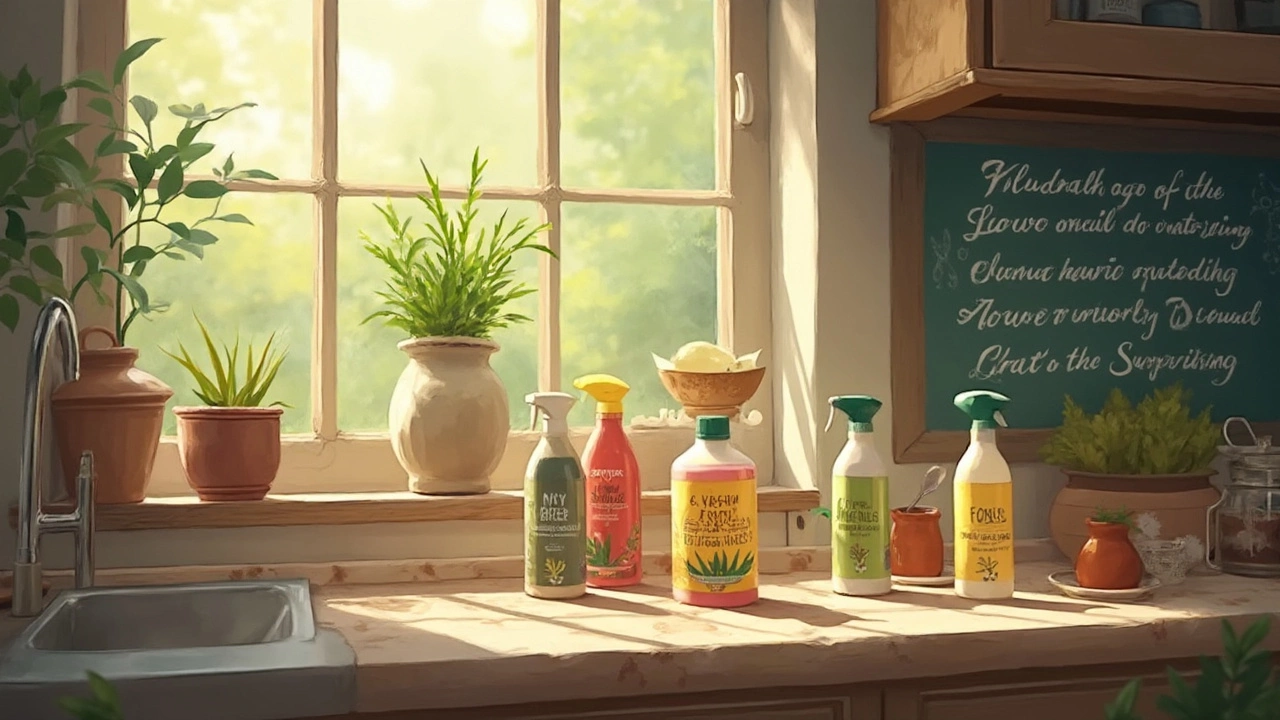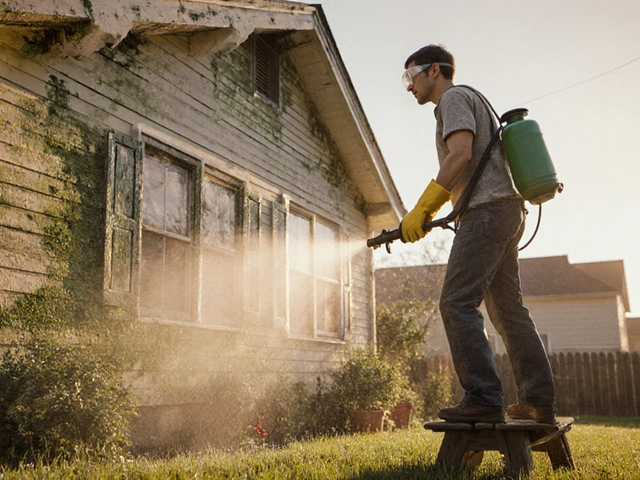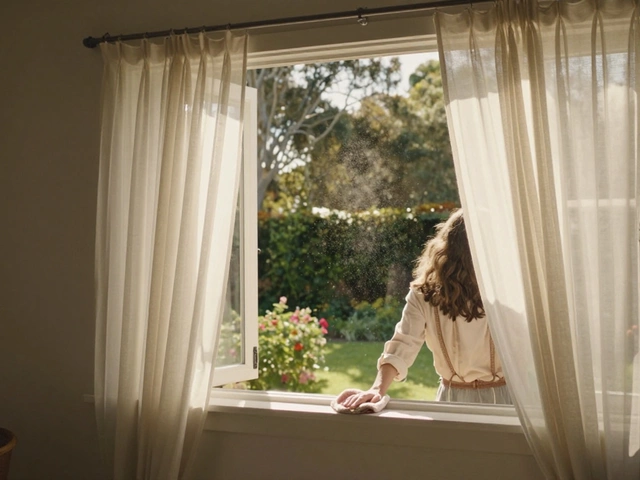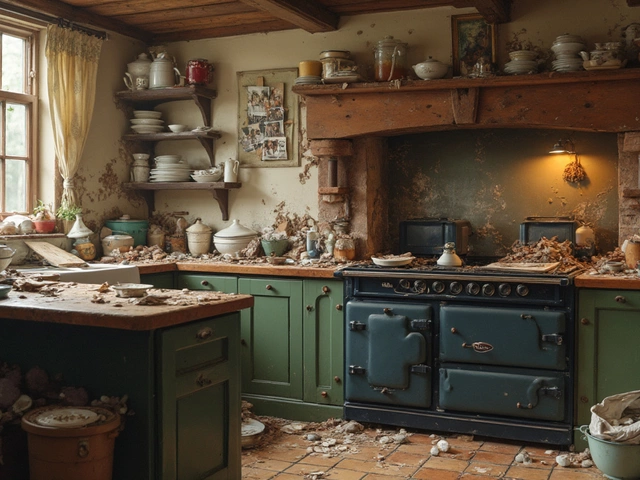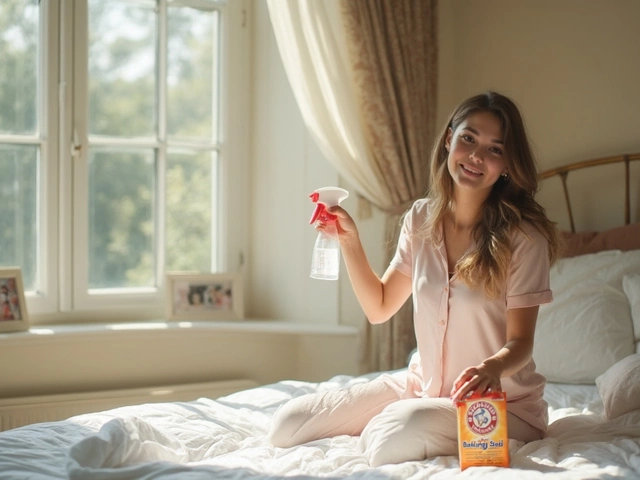Ever wonder if those green cleaning products can really disinfect as advertised? With more folks jumping on the eco-friendly bandwagon, it's become a hot topic. Generally, these products boast natural ingredients, unlike the chemical-heavy ones. But the real question is: Can they tackle germs effectively?
First off, let's talk about what makes a cleaner 'green.' Typically, natural ingredients like vinegar, essential oils, and baking soda are the stars. Now, while these are awesome for cleaning due to their non-toxic nature, disinfection requires more punch.
It's essential to know the difference between cleaning and disinfecting. Cleaning removes dirt and impurities, while disinfecting kills germs. Some green products might clean well but fall short on disinfection. However, that doesn't mean they're useless. They often work great when used correctly and with the right expectations.
- What Are Green Cleaning Products?
- The Science Behind Disinfection
- Key Ingredients in Eco-Friendly Cleaners
- Tips for Effective Green Cleaning
- Myths and Facts About Natural Disinfectants
- Making Eco-Friendly Cleaning a Habit
What Are Green Cleaning Products?
Alright, so you've probably heard the term green cleaning thrown around, but what does it actually mean? In a nutshell, green cleaning products are designed to keep your home spick and span without harming the planet or your health. They're all about eco-friendliness, using natural ingredients instead of harsh chemicals.
Key Ingredients
These natural cleaners often feature ingredients like vinegar, citric acid, baking soda, and essential oils. Vinegar, in particular, is a natural powerhouse for cutting through grime, while citric acid can help bust through soap scum and hard water stains. Essential oils not only give a pleasant scent but also some have antimicrobial properties.
What Makes Them Green?
So, what really sets eco-friendly cleaning products apart? It's their commitment to being non-toxic and biodegradable. They're free from synthetic fragrances and colors, phosphates, and chlorine. This means fewer pollutants down the drain and a safer home environment, especially if you have kids or pets.
- Nontoxic: Safe around kids and pets.
- Biodegradable: Breaks down naturally without leaving harmful residues.
- Eco-Conscious Packaging: Often found in recycled or reusable containers.
Are They Effective?
Now, you might be wondering, do these natural cleaners really stack up against their chemical-laden counterparts? While they excel in many cleaning tasks, it's good to know their limits. For tasks demanding heavy-duty disinfection, you'll want to double-check what each product can do. Some green products have been tweaked to include naturally-derived disinfectants that do a decent job.
| Ingredient | Common Use |
|---|---|
| Vinegar | General surface cleaner |
| Citrus Oil | Grease cutter |
| Baking Soda | Deodorizer |
In conclusion, sticking with natural cleaners is a solid choice for daily cleaning. They promote health and well-being in a simple, effective way. But keep an eye out for specific germ-fighting claims if disinfecting is your top priority.
The Science Behind Disinfection
When we're talking about disinfection, we're basically focusing on killing harmful germs and bacteria. It's not just about wiping away visible dirt, but going a step further to make sure those tiny nasties are gone. Traditional cleaning products often use chemicals like bleach or alcohol to get rid of germs. But how does this work exactly?
These chemical disinfectants work by breaking down the cell walls of bacteria and viruses or disrupting their metabolism. In contrast, green cleaning products often take a different approach, using natural ingredients that aim to be just as effective but less harsh.
Do Natural Ingredients Really Work?
There are certain natural ingredients that have inherent disinfecting properties. For instance, tea tree oil and thyme oil are known for their antimicrobial qualities and are found in many eco-friendly disinfecting products. Vinegar can also kill some germs due to its acidity, but it's not a powerhouse against all bacteria or viruses.
While these natural agents can help in reducing the risk of infection, they might not always meet the same standards of disinfection as conventional products in high-risk areas like hospitals.
| Ingredient | Effectiveness |
|---|---|
| Tea Tree Oil | Antimicrobial properties |
| Vinegar | Acidic; not effective against all germs |
| Thyme Oil | Strong against certain bacteria |
Boosting the Effectiveness of Green Cleaners
If you're all in for natural products, you can still ensure a clean home. Combine techniques like using hot water where possible, or let cleaning solutions sit a bit longer on surfaces to maximize their germ-killing power. The method and time matter as much as the product.
Ultimately, having a clean home with natural cleaners is achievable, but understanding the science behind the cleaning can help manage expectations and make informed choices.
Key Ingredients in Eco-Friendly Cleaners
So, what exactly makes those green cleaning products tick? Let’s dig into some common natural ingredients that bring the clean without the harsh chemicals.
Vinegar
First up is vinegar, the all-around cleaner. It's super acidic, which makes it great for tackling grime and breaking down minor buildups. However, it's not a disinfectant by itself but works wonders in combination with others.
Essential Oils
Next, we have essential oils like tea tree and eucalyptus. These oils carry natural antimicrobial properties, making them handy for adding a disinfectant punch to your cleaning routine.
Baking Soda
Baking soda is another kitchen staple that’s a cleaning superstar. It doesn’t kill germs but is awesome for scrubbing and neutralizing odors.
Hydrogen Peroxide
Hydrogen peroxide is the real MVP when it comes to natural cleaners with disinfecting abilities. It's strong enough to kill bacteria, viruses, and fungi. Just keep it stored in a dark container to maintain its power.
Lemon Juice
Lemon juice is known for its antibacterial properties and adds a fresh scent to your cleaning arsenal. It's perfect for surfaces like cutting boards and counters.
Check out this quick list of eco-friendly ingredients paired with their uses:
- Vinegar: Cleans glass and mirrors, cuts grease.
- Tea Tree Oil: Natural disinfectant, good for bathrooms.
- Baking Soda: Scrubs surfaces and deodorizes.
- Hydrogen Peroxide: Effective disinfectant, safer than bleach.
- Lemon Juice: Antibacterial and refreshing.
Incorporating these ingredients into your eco-friendly cleaning routine means you’ll be doing the planet and your home a favor without sacrificing cleanliness.
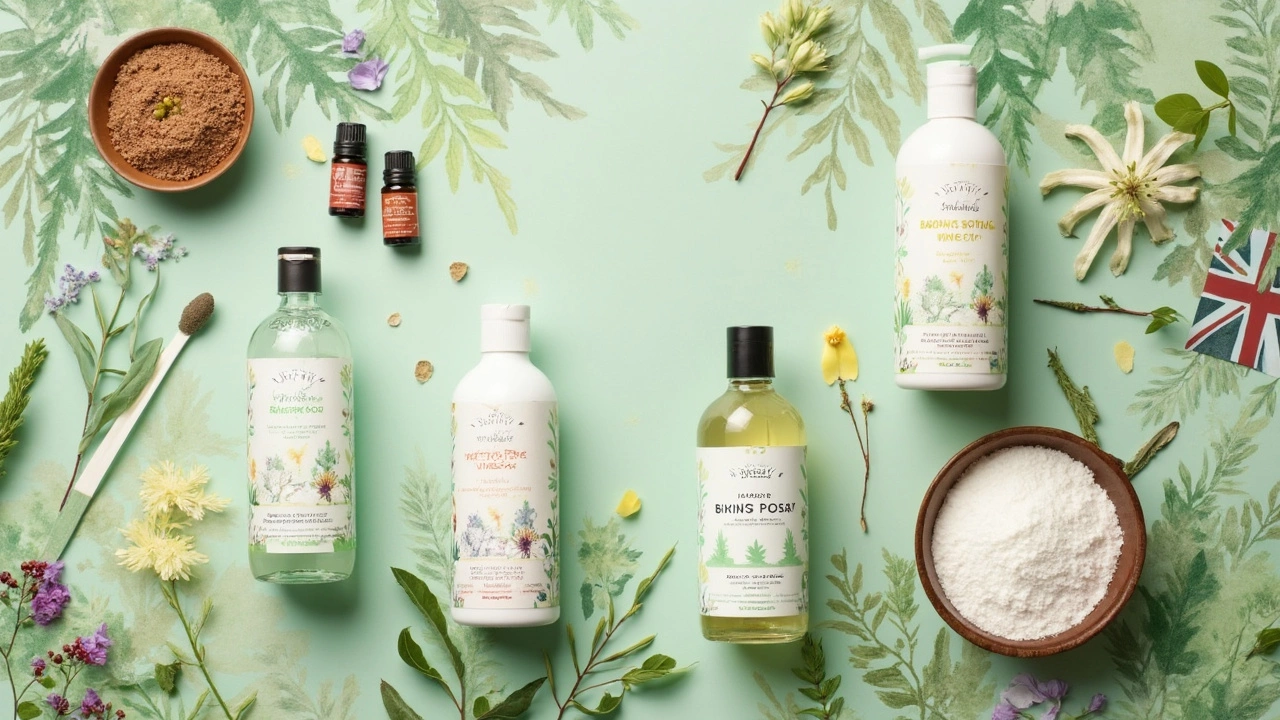
Tips for Effective Green Cleaning
So, you've decided to go green with your cleaning routine? Awesome choice! Let's cover some tips to help you get the most out of your green cleaning products while maintaining a hygienic home.
Choose the Right Products
Not all eco-friendly cleaners are made the same. Look for products that have proven antibacterial or antiviral properties. Ingredients like tea tree oil, eucalyptus, and thyme have natural disinfectant abilities without the harsh chemicals.
DIY Enzyme Cleaners
If you're in the mood to create your own cleaner, try making enzyme-based solutions at home. These can be effective against grime and bacteria. You'll need water, sugar, yeast, and some citrus peels to kick start the enzyme activity.
Proper Application is Key
For sustainable cleaning, how you use your products matters. Spray the cleaner and let it sit for a few minutes, as contact time increases effectiveness. Don't rush! The longer it sits, the better it works at busting those germs.
Regular Maintenance
Incorporate a regular natural cleaners schedule to keep things pristine without needing heavy-duty cleaning products. Consistency here reduces buildup, making it easier to tackle microbes using milder solutions.
Use the Right Tools
Pairing your eco-friendly disinfecting agents with microfiber cloths can make a world of difference. They trap dirt and microorganisms mechanically, boosting the cleaning power without environmental harm.
Test and Adjust
Last but not least, be open to experimenting. Test different product combinations and techniques to find what works best for you and your home. Everyone's setup is different, and what works for one might not suit another.
Myths and Facts About Natural Disinfectants
There's a ton of buzz around green cleaning and whether these eco-friendly products can actually disinfect. Let's clear up some common myths and get down to the facts.
Myth: Natural Means Less Effective
This myth is pretty widespread, but not entirely true. Sure, some natural ingredients might not pack the same punch as industrial chemicals, but that doesn't mean they're useless. Things like tea tree oil and thyme have shown antimicrobial properties in some studies. The key is using them correctly, just like with any disinfectant.
Fact: Vinegar Alone Won't Cut It for Disinfection
While vinegar is a fabulous cleaner, it's not a strong disinfectant on its own. Mix it with other ingredients if you aim to zap the germs. On the flip side, combining it with hydrogen peroxide can make a potent duo, but always handle with care!
Myth: All Green Cleaners Are Biodegradable
This is a bit of a half-truth. While many eco-friendly cleaning products are biodegradable, not all of them are. It's crucial to check labels and certifications if that's a priority for you.
Fact: Certification Matters
Look for certified products to ensure you're getting the real deal. Certifications like EcoLogo or Green Seal can help guide your choices, ensuring those products have passed some legit testing for both safety and effectiveness.
- Pro Tip: Check local regulations; some areas have restrictions on certain chemicals, even in natural products.
Myth: Natural Disinfectants Are New
Not at all! Things like vinegar and baking soda have been around forever, both in homes and old-school medicine. These ancient go-tos are getting a modern twist with today's eco-conscious mindset.
So, the takeaway? Natural doesn't automatically mean ineffective. But understanding what each ingredient does and how best to use it is key in the world of sustainable cleaning.
Making Eco-Friendly Cleaning a Habit
Switching to eco-friendly cleaning doesn’t have to be a hassle, and it’s definitely easier than it sounds. Integrating green products into your cleaning routine can make a big difference for both your health and the planet.
Start Small and Build Up
Diving headfirst into a full eco-home makeover can feel overwhelming. Instead, start with one room or area. Replace conventional products with natural ones step by step. For instance, try a natural disinfectant spray in the bathroom or use a vinegar solution to clean kitchen surfaces.
Know Your Ingredients
Get familiar with the powerhouse ingredients in green cleaning products. Vinegar is great for cleaning glass and removing odors. Baking soda works wonders on stains and grime. Essential oils like tea tree or lavender provide a fresh scent and have antibacterial properties.
Set a Schedule
A little planning goes a long way. Create a cleaning schedule that aligns with your lifestyle. Whether it's daily tidying or weekly deep-cleaning sessions, sticking to a routine helps maintain a clean home effortlessly.
DIY Your Cleaning Products
If you’re feeling crafty, make your own cleaning solutions. It’s easier than you think and ensures you know exactly what’s going into your cleaners. A simple mix of vinegar, water, and a few drops of essential oil can handle many tasks.
Stay Informed and Flexible
Be open to adjusting your methods as needed. Not every natural cleaner will work for every mess, and that’s okay. Stay up-to-date with the latest in sustainable cleaning techniques or products by following blogs, joining communities, or just experimenting to see what suits you best.
Remember, the journey towards an eco-friendly home doesn’t have to be perfect. Each small step you take helps create a healthier environment for you and those around you.
